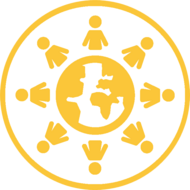SRVCE Curriculum Module 1: Duty & Service
(View Complete Item Description)The Duty & Service module from the Supporting Readiness through Vital Civic Empowerment curriculum, focuses on how individuals are important to establishing a strong community, how civic identity promotes civic engagement, and how to advance change through civic action. There are 15 lessons in this module that include video, student-facing slides, a teacher toolkit, and handouts. The lessons are aligned with the C3 Framework, National Association for Media Literacy Education (NAMLE) Core Principles of Media Literacy Education, and Collaborative for Academic, Social, and Emotional Learning (CASEL) Social and Emotional Learning Competencies. Educators may modify the materials to suit the specific needs of their students. This may include adapting the materials for various settings and purposes, provided that such changes are made within the scope of the specific educational use. .
Material Type: Lesson, Lesson Plan, Module, Teaching/Learning Strategy, Unit of Study




















